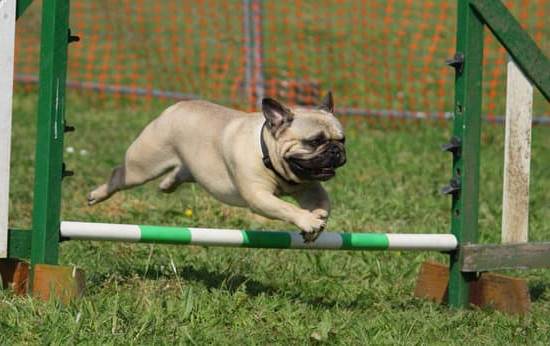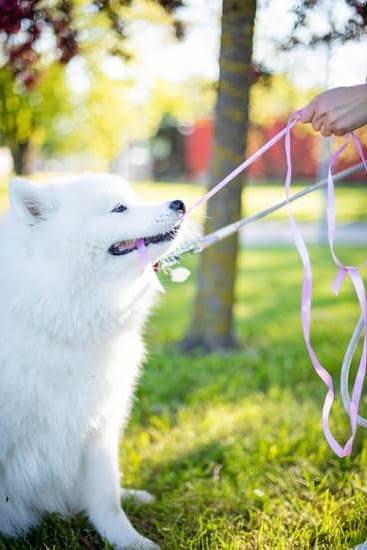What age should you train a dog? Understanding the importance of dog training is essential in determining the ideal age to start. Training a dog not only teaches them obedience but also helps in forming a strong bond between the owner and their furry companion. It is crucial to consider the developmental stages of dogs and tailor training methods accordingly. This article explores the critical stages of dog development and provides insight into when to begin training your canine friend.
Training a dog is an essential aspect of responsible pet ownership. It not only ensures that your furry friend behaves well in different situations but also contributes to their overall well-being.
From basic commands to advanced obedience training, there are various stages in a dog’s life when they can benefit from proper training. Understanding the best age to start training is crucial for setting your dog up for success and ensuring a harmonious relationship between you and your pet.
The critical developmental stages of dogs play a significant role in determining the ideal age for training. Whether it’s teaching early puppy socialization or addressing behavioral issues in adolescent dogs, each stage requires specific training methods tailored to their needs.
By understanding how age can affect training, pet owners can provide their dogs with the necessary skills and behavior guidance at the right time. In this article, we will delve into each developmental stage and explore the best approach to training for each phase of your dog’s life.
The Critical Developmental Stages of Dogs
First and foremost, it’s important to recognize that puppies go through several developmental milestones in their first year of life. From birth to 7 weeks old, they experience the neonatal stage, where they rely on their mother for warmth, nourishment, and socialization with littermates.
At around 3 weeks old, they start to explore their surroundings and develop basic motor skills. Then comes the transitional stage between 3 to 6 weeks, where they become more aware of their environment and begin interacting with humans.
As puppies reach 8 weeks old, they enter the socialization period, which is a critical time for introducing them to various experiences, people, other animals, and environments. This is also the ideal time to start basic obedience training and teaching them fundamental commands such as sit, stay, come, and leash manners.
During the adolescent stage (6 months to 2 years), dogs may exhibit rebellious behavior or test boundaries as part of their natural maturation process. It is essential for pet owners to address behavioral issues promptly and continue obedience training during this phase.
Furthermore, adult dogs may benefit from continuing education and advanced command training to keep them mentally stimulated and engaged. Senior dogs require tailored training methods that accommodate any physical limitations while still providing mental enrichment. Understanding these critical developmental stages can help determine the most suitable age to train a dog based on their specific needs and capabilities.
- The ideal age to start basic obedience training
- Addressing behavioral issues during adolescence
- Tailoring training methods for older canines
Early Puppy Training
When it comes to training your furry companion, understanding the ideal age to start basic commands and socialization is crucial for their development. Many dog owners wonder what age should you train a dog, especially when it comes to puppies. Early puppy training is essential for laying the foundation for good behavior and socialization skills.
The ideal age to start basic commands and socialization for puppies is around 7-8 weeks old. At this stage, puppies are in the critical developmental stage where they are highly receptive to learning. Basic commands such as sit, stay, come, and walking on a leash can be introduced at this age. Socialization with other dogs and people is also important during this time to prevent future behavioral issues.
During the early puppy training phase, positive reinforcement is key. Using treats, praise, and rewards will help reinforce good behavior and motivate your puppy to learn. It’s important to keep training sessions short (5-10 minutes) as puppies have short attention spans. Consistency and patience are also vital during this stage as puppies are still learning about the world around them.
It’s important to note that every puppy develops differently, so it’s essential to tailor your training approach based on your puppy’s individual needs. Additionally, seeking guidance from a professional trainer can provide valuable insights on how to effectively train your puppy during this critical stage of development.
Adolescent Dog Training
Training adolescent dogs can be a challenging yet rewarding experience. This stage in a dog’s development typically occurs between the ages of six months to two years, depending on the breed. During this time, many dogs begin to test boundaries and exhibit behavioral issues that need to be addressed through training.
Adolescent dogs often go through a phase where they may become more independent and stubborn. This is also the time when they start to explore their surroundings and may exhibit behaviors such as jumping, chewing, and pulling on the leash. Obedience training during this stage is crucial in order to establish proper behavior and prevent these issues from becoming long-term habits.
In addition to basic obedience training, it’s important to address any behavioral issues that may arise during this stage of a dog’s life. Common problems include aggression towards other dogs or humans, excessive barking, and separation anxiety. By addressing these issues early on with proper training and socialization, you can help your adolescent dog grow into a well-behaved and balanced adult canine companion.
Some experts recommend starting obedience training and addressing behavioral issues as early as six months of age for some breeds. However, every dog is different, so it’s important to take into consideration the individual personality, breed characteristics, and previous experiences of your adolescent dog when determining the best approach to training at this age.
| Age Range | Training Tips |
|---|---|
| 6-12 months | Focus on basic obedience commands such as sit, stay, come, and walking on a leash. |
| 12-24 months | Address any behavioral issues that may arise with patience and consistent training. |
Adult Dog Training
Continuing Education for Adult Dogs
Once your dog has mastered the basic commands and has established a good level of obedience, it’s important to continue their education. Adult dogs are capable of learning advanced commands and tricks that can stimulate them mentally and provide enrichment. Training should be an ongoing process throughout a dog’s life to maintain good behavior and strengthen the bond between the dog and their owner.
Advanced Commands
Adult dogs are able to learn more complex commands such as “stay”, “leave it”, “take it”, and “heel”. These commands require more focus and self-control from the dog, which can enhance their obedience and response to their owner’s cues. Teaching advanced commands also helps prevent boredom in adult dogs, as they enjoy mental stimulation through learning new tasks.
Challenges in Adult Dog Training
Training adult dogs may come with its own set of challenges compared to training puppies. Adult dogs may have already developed certain behaviors or habits that need to be addressed through training. For example, some adult dogs may exhibit leash pulling or jumping up on people, which requires consistent training to correct these behaviors. Additionally, adult dogs may have acquired fear or aggression issues that need to be worked on with professional guidance.
Considering the unique needs of adult dogs when it comes to continuing their education and teaching advanced commands is essential for providing them with the best possible training experience.
Training Senior Dogs
As dogs age, their physical abilities and mental sharpness may decline. This can make training a bit more challenging, but it is not impossible. It’s important to understand that just because a dog is getting older, it doesn’t mean they cannot learn new things. Here are some tailored training methods for senior dogs:
1. Understand the dog’s limitations: Senior dogs may have physical limitations such as arthritis or reduced mobility. It’s important to take these into consideration when creating a training plan. Avoid putting too much strain on their joints and be patient with their movements.
2. Use positive reinforcement: Older dogs may be more set in their ways, so using positive reinforcement techniques such as treats and praise can motivate them to learn new behaviors.
3. Adapt the training to their needs: Consider adjusting the duration and intensity of training sessions to accommodate the dog’s energy levels and attention span.
It’s essential to remember that every dog is different, and what works for one senior dog may not work for another. It is crucial to be patient, understanding, and consistent with your training approach when working with senior dogs.
Factors to Consider When Determining the Best Age to Train a Dog
When determining the best age to train a dog, there are several factors that should be taken into consideration. Every dog is different and may have unique needs depending on their breed, size, and individual personality. It is important to evaluate these factors when deciding the appropriate age to start training your furry companion.
Breed and Size
Certain breeds mature at different rates, so it’s crucial to take this into account when considering training. Small dog breeds typically reach maturity faster than larger breeds, so training can often begin at an earlier age. Understanding the specific developmental timeline for your dog’s breed can help you determine the best age to start training.
Health and Physical Development
The physical development of a dog plays a key role in their ability to participate in training activities. Training activities that require physical exertion or coordination should be introduced once the dog has developed the necessary strength and coordination. Additionally, it is important to ensure that a puppy has received all necessary vaccinations before beginning formal training in order to protect their health.
Individual Temperament
Each dog has its own unique temperament and personality traits. Some dogs may be ready for basic obedience training at a younger age, while others may require more time to mature mentally and emotionally. Observing your dog’s behavior and consulting with a professional trainer can help you determine the most suitable age to begin training based on their individual temperament and readiness.
Considering these factors will allow you to make an informed decision about what age you should start training your dog, ultimately setting them up for success in their learning journey.
Conclusion
In conclusion, determining the ideal age to start training your dog is a crucial consideration for every pet owner. The critical developmental stages of dogs play a significant role in shaping their behavior and receptiveness to training. Early puppy training, starting at around 8 weeks old, sets the foundation for basic commands and socialization skills. This early stage is vital for shaping a well-behaved and well-adjusted adult dog.
As dogs enter adolescence, typically between 6 months to 2 years old, they may exhibit behavioral issues that require addressing through obedience training. This stage is essential for establishing boundaries and reinforcing good behavior. Adult dog training focuses on continuing education and introducing advanced commands to keep your furry companion mentally stimulated and engaged.
When it comes to senior dogs, it’s not too late to train them. Tailoring training methods to accommodate their physical limitations and cognitive abilities can help maintain their mental acuity and overall wellbeing. Every dog is unique, so it’s important to consider factors such as breed, temperament, and individual personality when determining the best age to begin training.
Ultimately, there is no one-size-fits-all answer to the question of what age you should train a dog. It depends on various factors such as breed, individual characteristics, and your own preferences as a pet owner. Whether you have a young puppy or an older canine companion, the most important thing is to approach training with patience, consistency, and positive reinforcement in order to develop a strong bond with your furry friend.
Frequently Asked Questions
What Age Should You Start Training Your Puppy?
It is recommended to start training your puppy as early as 7-8 weeks old. This is the critical socialization period where they are most receptive to learning and forming positive behaviors.
At What Age Is a Dog Not Trainable?
There isn’t a specific age when a dog becomes untrainable, but older dogs may require more patience and consistency in training. Some senior dogs can still learn new things with the right approach.
What Is the Hardest Age to Train a Dog?
The hardest age to train a dog is often considered to be adolescence, which is around 6 months to 18 months old. During this stage, dogs may test boundaries and become easily distracted, requiring extra patience and consistent training techniques.

Welcome to the blog! I am a professional dog trainer and have been working with dogs for many years. In this blog, I will be discussing various topics related to dog training, including tips, tricks, and advice. I hope you find this information helpful and informative. Thanks for reading!





